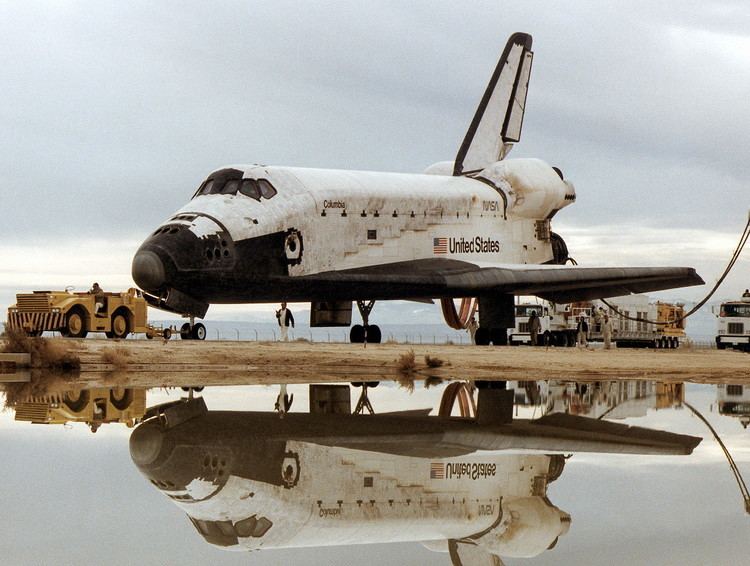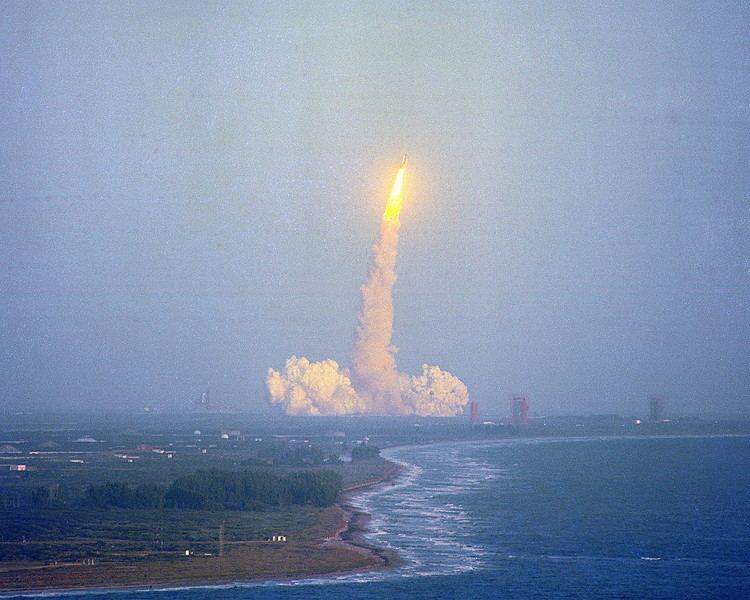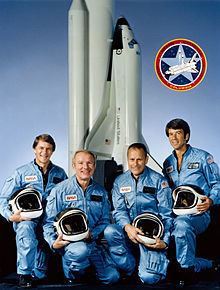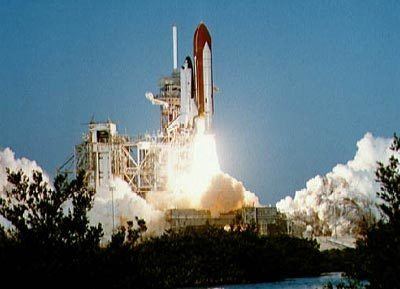Mission type Satellite deployment SATCAT no. 13650 Period 1.5 hours Dates 11 Nov 1982 – 16 Nov 1982 Landing date 16 November 1982 | COSPAR ID 1982-110A Orbits completed 81 Apogee 317,000 m Launch date 11 November 1982 | |
 | ||
Mission duration 5 days, 2 hours, 14 minutes, 26 seconds Distance travelled 3,397,082 kilometers (2,110,849 mi) | ||
Space shuttle flight 5 sts 5 post flight presentation
STS-5 was the fifth NASA Space Shuttle mission and the fifth flight of the Space Shuttle Columbia. It launched on 11 November 1982 and landed five days later on 16 November. STS-5 was the first shuttle mission to deploy communications satellites into orbit, and the first officially "operational" shuttle mission.
Contents
- Space shuttle flight 5 sts 5 post flight presentation
- Support crew
- Mission summary
- Operational status
- Mission insignia
- Wake up calls
- References

Support crew
Mission summary
Columbia launched on schedule from Kennedy Space Center (KSC) at 7:19 am EST, 11 November 1982. The shuttle carried a crew of four – the largest spacecraft crew up to that time – and the first two commercial communications satellites to be flown aboard a shuttle.

The commercial satellites were deployed successfully and subsequently propelled into their operational geosynchronous orbits by McDonnell Douglas PAM-D kickmotors. The two satellites were SBS 3, owned by Satellite Business Systems, and Anik C3, owned by Telesat Canada; both were Hughes-built HS-376-series satellites. In addition, STS-5 carried a West German-sponsored microgravity GAS experiment canister in the payload bay. The crew also conducted three student-designed experiments during the flight.

A planned spacewalk by Lenoir and Allen, the first of the Space Shuttle program, was postponed by one day after Lenoir became ill, and then had to be cancelled when the two spacesuits that were to be used developed problems.

Columbia landed on Runway 22 at Edwards Air Force Base on 16 November 1982, at 6:33 am PST, having traveled 2 million miles in 81 orbits during a mission that lasted 5 days, 2 hours, 14 minutes and 26 seconds. Columbia was returned to KSC on 22 November 1982. STS-5 was the first shuttle flight in which the crew did not wear pressure suits for the launch, reentry, and landing portions of the flight, similar to the Soviet Voskhod and Soyuz missions prior to the ill-fated Soyuz 11 mission in 1971.
Operational status
The shuttle was formally declared "operational" after STS-4. However, the Columbia Accident Investigation Board (CAIB), in its report on the loss with all crew aboard of Columbia during STS-107 in 2003, asserted that the orbiter should never have been considered operational and that, while not intrinsically unsafe, it was in fact an experimental vehicle. The CAIB's rationale was that civilian and military aircraft that are considered operational must have been tested and proven over thousands of safe flights in their final operational configurations, whereas the shuttle had conducted under 200 flights, with continuous modification. NASA operated the Space Shuttle as an experimental vehicle for the remainder of the program.
Mission insignia
The five points of the blue star of the mission patch indicate the flight's numerical designation in the Space Transportation System's mission sequence.
Wake-up calls
NASA began a tradition of playing music to astronauts during the Gemini program, and first used music to wake up a flight crew during Apollo 15. Each track is specially chosen, often by the astronauts' families, and usually has a special meaning to an individual member of the crew, or is applicable to their daily activities.
